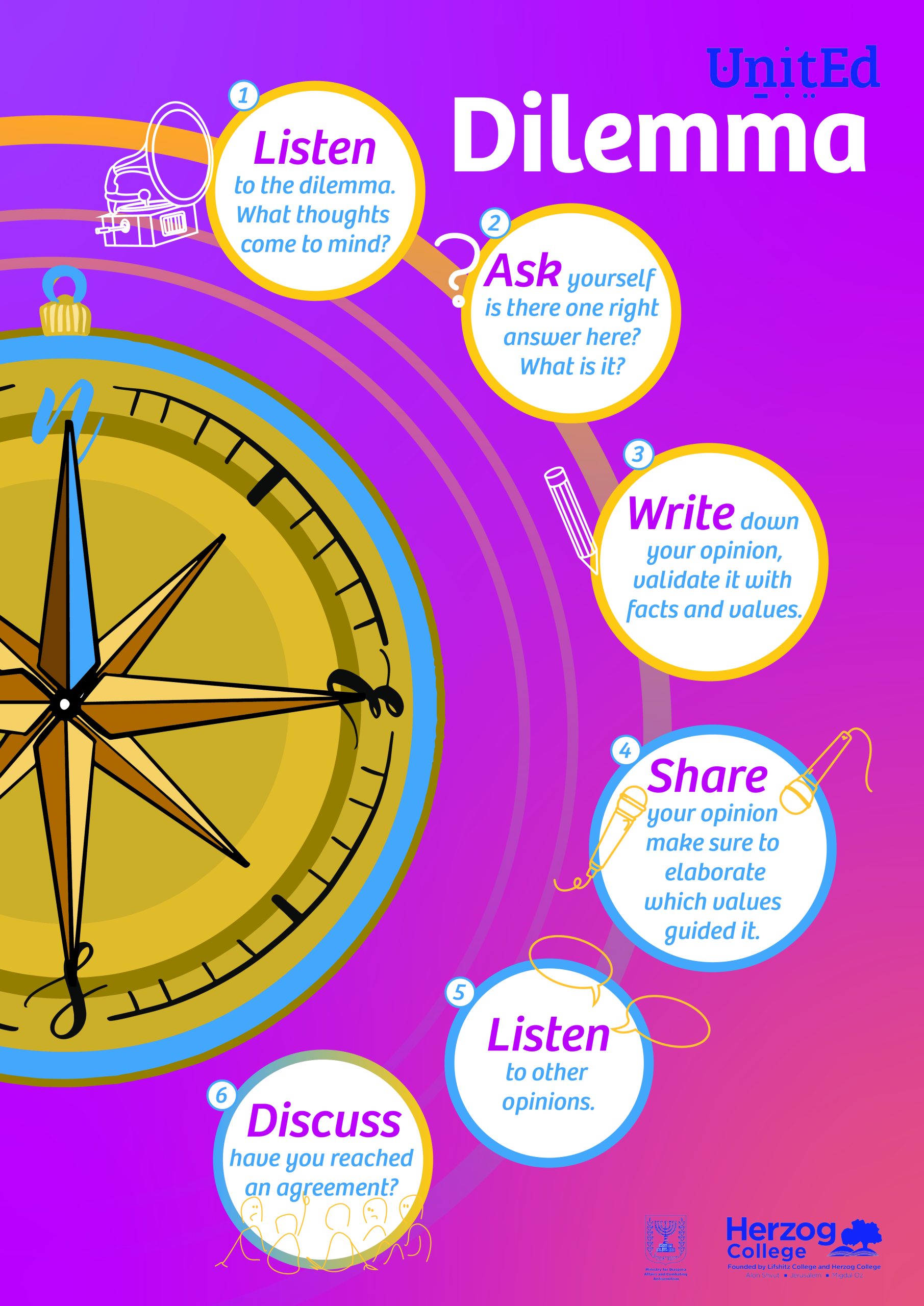Dilemma
Learning
Learning
Learning
What Is This?
Presenting ethical dilemmas in the classroom is a practice in which students are presented with stories and situations which require decision making. These moral dilemmas require choosing between two seemingly right choices. In the process, students are encouraged to search for, and evaluate their assumptions. They are prompted to explore the reasons behind their opinions, to examine other opinions without prejudice and to make an individual thoughtful decision with confidence.
How To Use It?
Present the class with a well chosen situation, story or text. Choose materials which suggest two possible courses of action, decision or opinion formation. Have student consider these values when contemplating the dilemma:
- Honesty
- Integrity
- Promise-keeping
- Loyalty
- Fairness
- Caring
- Respect for others
- Law abiding
Have students write their views quietly by answering the question “why?” after choosing a stand, so as to avoid students influencing each other. After individual work has been done, conduct whole class discussion, think-pair-share, group discussion, peer-learning etc.
When To Use?
This teaching practice can be used as an introduction to learning value base topics or texts. It can also be used when engaging the class in current affairs discussions. Dilemmas can be used for practicing debates in the classroom, either before, or as a conclusion to learning of a specific topic or unit.
Dilemmas can be used when learning any unit or content that relates to these three domains:
- The moral domain focuses on dilemmas in which differentiated values and decisions which affect others. Moral issues usually have to do with justice and fairness or (avoiding) harm.
- The conventional domain focuses on dilemmas which have to do with social norms, traditions and rules that depend on dynamic social context.
- The personal domain focuses on dilemmas which people believe should not be governed by universal moral rules or socially determined conventions, but instead should be up to personal choice
How To Assess?
The assessment of dilemma learning can be done by examining students’ participation using a criteria that is shared with students before the lesson.
Criteria can assess these elements:
- Students can identify the dilemma and describe what defines it as such.
- Students can describe different perspectives clearly.
- Students can articulate their chosen ethical stand and explain the underlying values.
- Students can listen to other perspectives, while defending their own views.
Assessment can relate to discussion participation, using appropriate language, listening skills or writing clearly, using a pre-discussed writing format.

